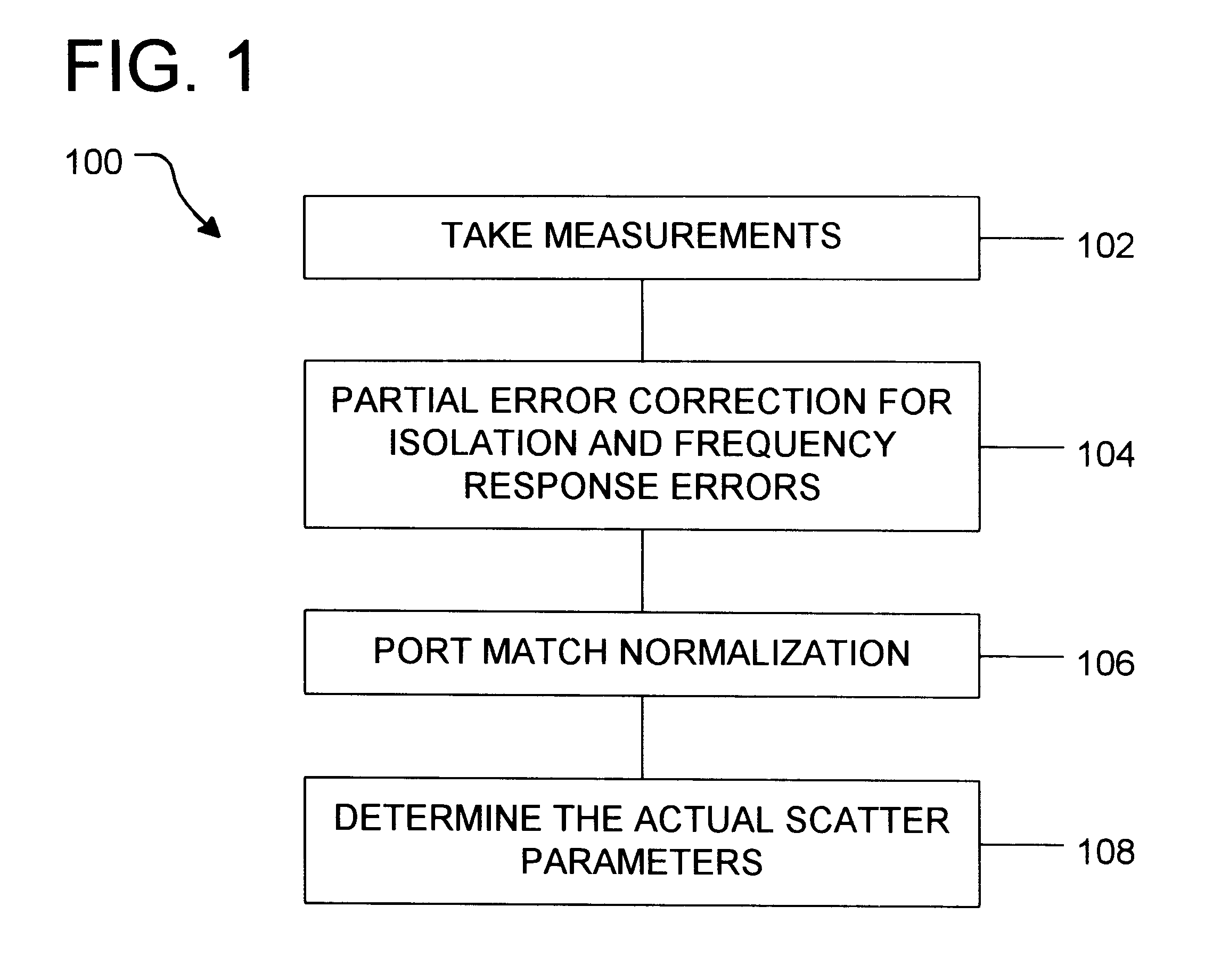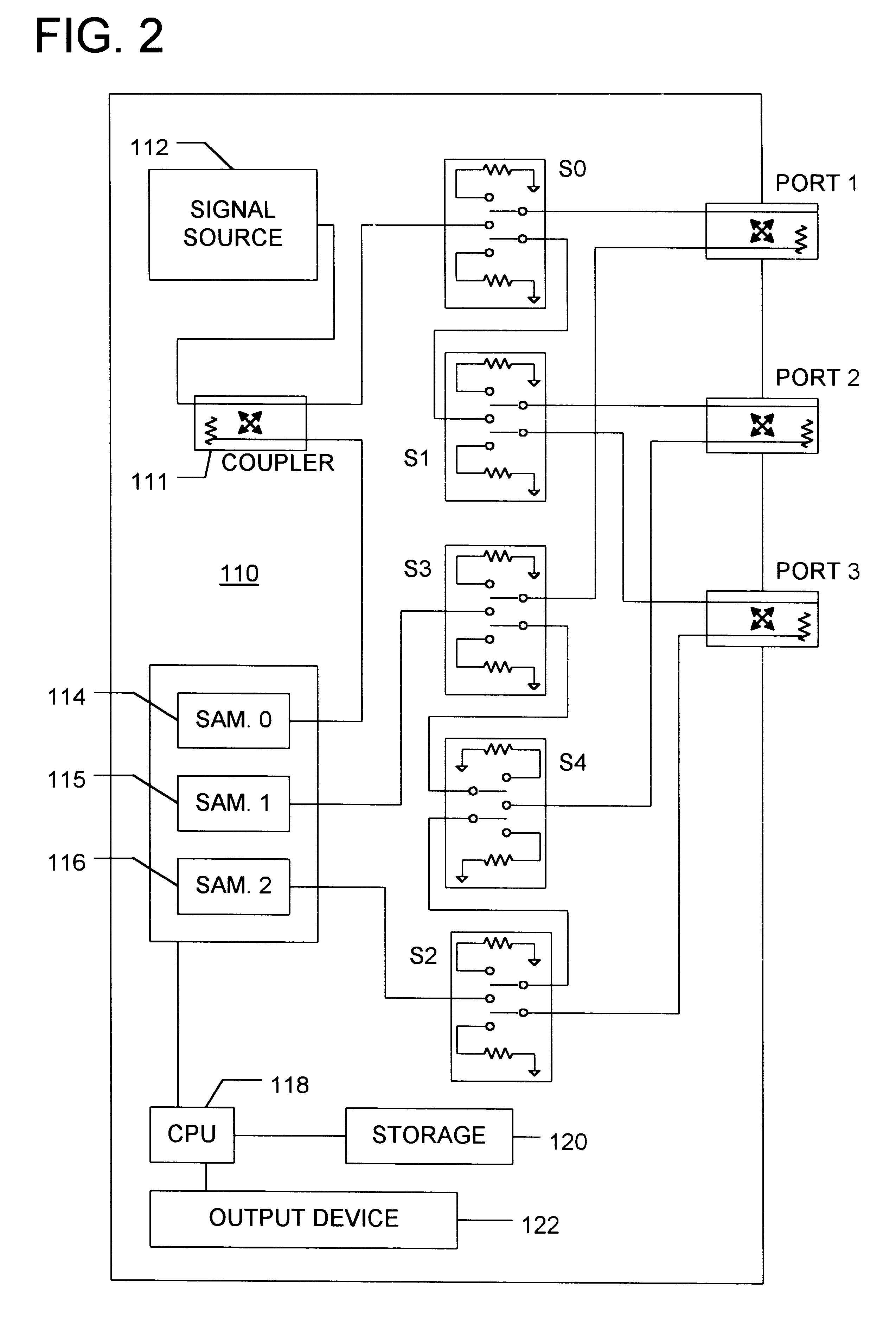Method and apparatus for efficient measurement of reciprocal multiport devices in vector network analysis
a multi-port device and vector network technology, applied in the direction of measurement devices, resistance/reactance/impedence, instruments, etc., can solve the problems of a large number of receivers, the time it takes to fully characterize a device is long, and the approach is slow
- Summary
- Abstract
- Description
- Claims
- Application Information
AI Technical Summary
Problems solved by technology
Method used
Image
Examples
case 1
TABLE 3A (CASE 1) Scattering parameter measured Where P = 3 Receiver 1 Receiver 2 Sweep 1 S.sub.11M S.sub.21M Sweep 2 S.sub.22M S.sub.32M Sweep 3 S.sub.33M S.sub.13M
Alternative measurements that may be made are listed in TABLE 3B. The alternative measurements exist because, for any port combination i and j, either S.sub.ij or S.sub.ji may be measured.
TABLE 3B (CASE 2) Scattering parameter measured Where P = 3 Receiver 1 Receiver 2 Sweep 1 S.sub.11M S.sub.31M Sweep 2 S.sub.22M S.sub.12M Sweep 3 S.sub.33M S.sub.23M
Error Correction
Next, the measured values are partially error corrected to remove isolation errors and frequency response errors introduced by a VNA. Operation 104. Imperfections in network analyzer hardware degrade measurement accuracy. The effect of some hardware imperfections can be characterized and removed from the measurements via vector error correction. Hardware imperfections corrected by this process include isolation errors (directivity for reflection measurements ...
PUM
 Login to View More
Login to View More Abstract
Description
Claims
Application Information
 Login to View More
Login to View More - R&D
- Intellectual Property
- Life Sciences
- Materials
- Tech Scout
- Unparalleled Data Quality
- Higher Quality Content
- 60% Fewer Hallucinations
Browse by: Latest US Patents, China's latest patents, Technical Efficacy Thesaurus, Application Domain, Technology Topic, Popular Technical Reports.
© 2025 PatSnap. All rights reserved.Legal|Privacy policy|Modern Slavery Act Transparency Statement|Sitemap|About US| Contact US: help@patsnap.com



